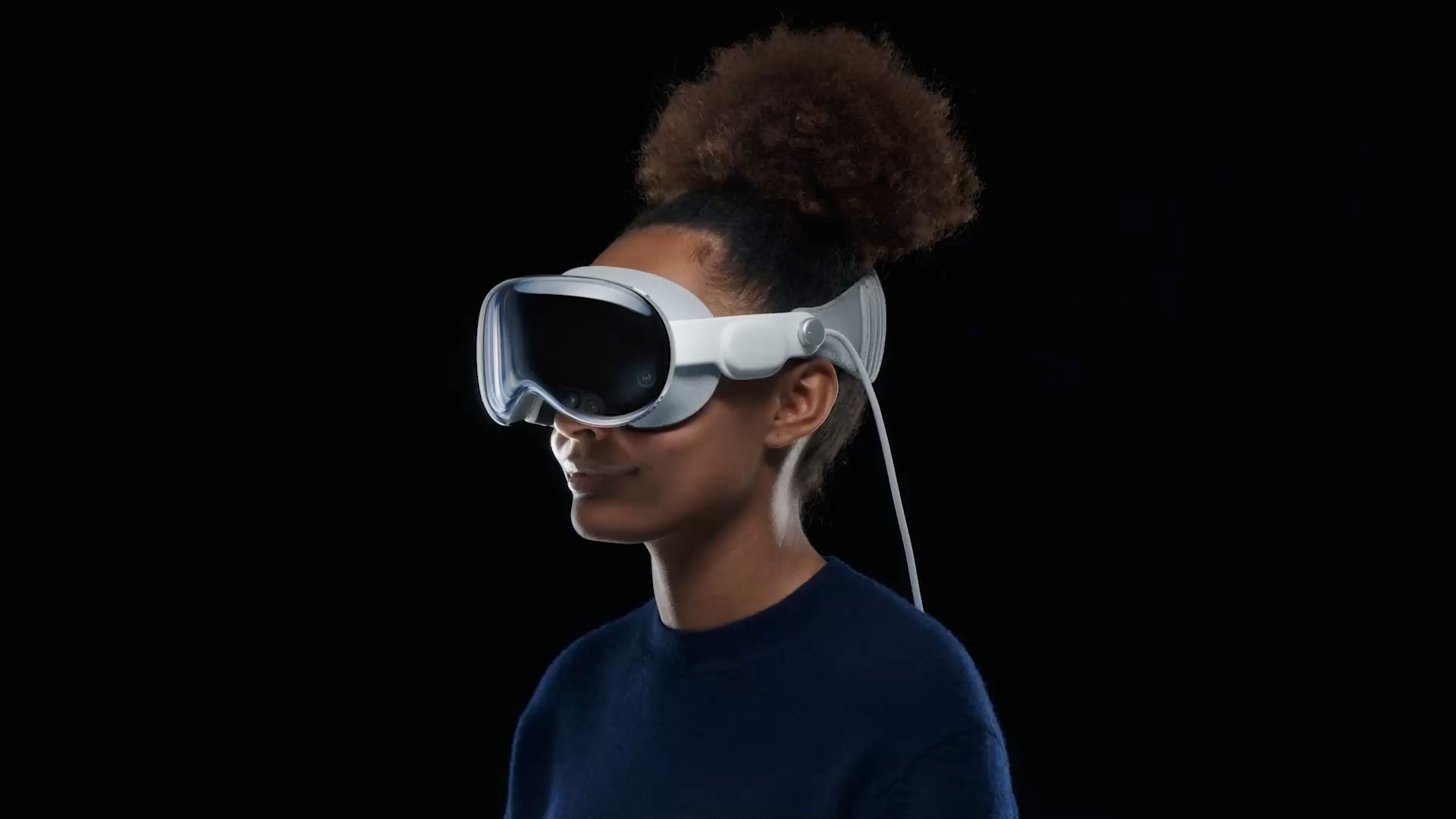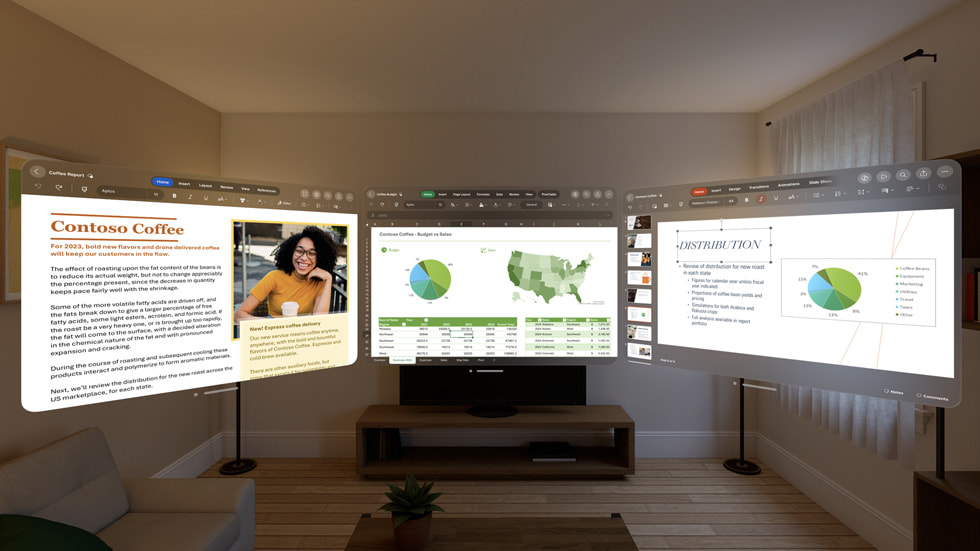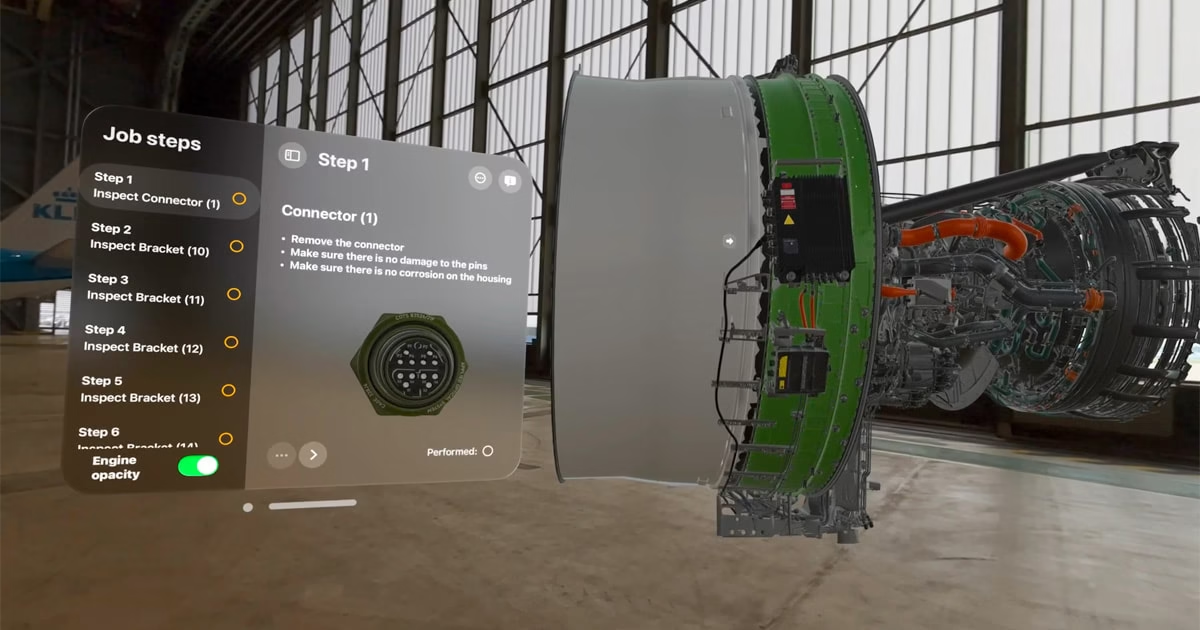Introduction: The Dawn of Spatial Computing with Apple Vision Pro
Estimated reading time: 10 minutes
Key Takeaways
- Spatial computing represents a paradigm shift from flat screens to integrated digital realities where digital content blends seamlessly with the physical world.
- The Apple Vision Pro is Apple’s pioneering “spatial computer,” designed to immerse users in digital experiences within their real-world surroundings.
- Core to spatial computing are the principles of blending physical and digital realities, extending beyond display boundaries, and enabling immersive, interactive experiences.
- The Apple Vision Pro is powered by advanced hardware, including ultra-high-resolution displays, a sophisticated sensor suite, and potent custom silicon (M-series and R1 chips).
- Key features include the revolutionary visionOS interface, advanced spatial awareness, and intuitive eye, hand, and voice controls.
- The device excels in immersive environments, app integration, multitasking, enhanced productivity, entertainment, and transforming collaboration.
- Apple Vision Pro is driving the evolution of computing by redefining user interaction, impacting enterprise and productivity, and fostering a growing ecosystem for spatial computing.
Table of Contents
- Introduction: The Dawn of Spatial Computing with Apple Vision Pro
- Key Takeaways
- Understanding Spatial Computing: The Foundational Concepts
- The Apple Vision Pro: A Gateway to Spatial Computing
- Unpacking the Apple Vision Pro Spatial Computing Features
- Key Apple Vision Pro Spatial Computing Features in Action
- The Future of Computing: Vision Pro’s Transformative Impact
- Final Thought
Imagine stepping into a reality where the digital world is no longer confined to a flat screen but elegantly interwoven with your physical surroundings. This is the promise of a new technological frontier, a dimension where digital content feels as tangible and present as the objects around you. Apple is at the vanguard of this evolution, leading the charge with the concept of what is spatial computing Apple is championing. At its core, spatial computing is the seamless fusion of digital information and experiences with the physical world, moving beyond the limitations of traditional displays to create immersive, three-dimensional interfaces. Digital elements no longer exist merely *on* a screen; they inhabit and interact within our real environment.

At the heart of this paradigm shift is the Apple Vision Pro, a device that represents Apple’s bold first step into the realm of “spatial computers.” This groundbreaking device is engineered to embody this new way of interacting with technology, allowing users to engage with digital content and applications in a deeply integrated manner within their personal spaces.

This post aims to provide an in-depth exploration of the groundbreaking Apple Vision Pro spatial computing features, uncovering how they are fundamentally redefining our relationship with technology and ushering in a new era of digital interaction.
Understanding Spatial Computing: The Foundational Concepts
To truly appreciate the innovation embodied by the Apple Vision Pro, it’s essential to grasp the foundational concepts of spatial computing itself. This isn’t just an incremental upgrade; it’s a re-imagining of how we compute.
Defining Spatial Computing:
Spatial computing, in essence, refers to the integration of digital experiences directly into one’s physical environment. It signifies a shift where digital objects, interfaces, and information appear and behave as if they genuinely exist within the real world. Think of digital screens that can be placed on your desk, virtual characters that can interact with your furniture, or data visualizations that float in the air before you. This moves us far beyond the confines of traditional, flat screens, offering a much richer and more intuitive form of interaction.

Contrast with Traditional Computing:
The distinction between spatial computing and traditional computing is significant. Traditional computers, smartphones, and tablets all confine information and applications to specific, physical screens. While these devices have become incredibly powerful, our interaction with digital content remains mediated by these fixed displays. Spatial computing, on the other hand, leverages advanced sensors and sophisticated software to map a user’s surroundings. Once this environment is understood, digital content can be precisely placed and anchored within that space, making it feel tangible, interactive, and part of the real world. It’s like breaking free from the box of the screen.
Key Characteristics:
Several core principles define this emerging paradigm:
- Blending Physical and Digital Realities: At its heart, spatial computing uses a combination of sensors, cameras, and artificial intelligence to create a detailed, real-time understanding of the user’s actual environment. This allows digital elements to be integrated so convincingly that they appear to be part of that space. The digital and physical worlds don’t just coexist; they merge. (Source: Apple Newsroom) (Keywords: spatial computing)
- Beyond Display Boundaries: Spatial computing liberates digital content from the constraints of traditional screens. Imagine an “infinite canvas” where applications and content can be positioned anywhere within your field of view, scaled to any size, and moved as needed. This freedom from fixed screen dimensions offers unprecedented flexibility and a truly expansive digital workspace. (Source: AI Accelerator Institute) (Keywords: spatial computing)
- Immersive and Interactive: This paradigm shift enables highly natural and intuitive interactions. Users can navigate and control digital elements using their eyes, hands, and voice, mimicking natural human communication and interaction. The result is an experience that feels fluid, responsive, and context-aware, deeply engaging the user in a way that flat interfaces simply cannot. (Source: Apple Newsroom) (Keywords: spatial computing)
The Apple Vision Pro: A Gateway to Spatial Computing
The Apple Vision Pro is not merely a device; it’s a meticulously engineered gateway designed to unlock the potential of spatial computing. Its capabilities are underpinned by a sophisticated interplay of cutting-edge hardware components.
Hardware Foundation:
The device’s ability to deliver compelling spatial experiences is a direct result of its advanced hardware:
- Ultra-High-Resolution Displays: At the core of the visual experience are dual micro-OLED screens, boasting an astonishing 23 million pixels. This provides a level of clarity and detail that surpasses 4K resolution for each eye, rendering digital content with breathtaking realism and sharpness. (Source: Apple Newsroom) (Keywords: Apple Vision Pro)
- Advanced Sensor Suite: A comprehensive array of cameras and sensors works in concert to enable the device’s spatial computing prowess. These components meticulously map the user’s environment, facilitate highly accurate hand and eye tracking, and capture detailed facial motion, all of which are crucial for creating an immersive and interactive experience. (Source: Apple Newsroom) (Keywords: Apple Vision Pro)
- Custom Silicon Power: The computational muscle behind the Apple Vision Pro comes from Apple’s own M-series and R1 chips. These custom-designed processors provide the immense power and low latency required to run complex, real-time spatial applications, ensuring a smooth and responsive experience that is fundamental to spatial computing. (Source: Apple Newsroom) (Keywords: Apple Vision Pro)

Unpacking the Apple Vision Pro Spatial Computing Features
The Apple Vision Pro differentiates itself through a suite of sophisticated features that bring spatial computing to life. These elements work in harmony to create a user experience that is both powerful and intuitively natural.
The Revolutionary visionOS Interface:
- The visionOS revolutionary interface is the world’s first spatial operating system, meticulously designed to place 3D applications and digital content richly around the user, making them feel like an integral part of the environment. (Keywords: visionOS revolutionary interface)
- Its intuitive control system redefines interaction. Users can seamlessly navigate and interact with digital elements using their eyes to target, their hands for gestures like pinching and swiping, and their voice for commands. This eliminates the need for cumbersome external controllers, making interaction feel as natural as possible. (Source: Apple Newsroom) (Keywords: visionOS revolutionary interface)
- A key aspect of visionOS is its sophisticated spatial awareness. Interfaces dynamically adapt to the user’s surroundings, considering room lighting and the user’s position. Digital elements exhibit natural shadows and realistic cues for scale and distance, ensuring they blend seamlessly into the physical space, enhancing the feeling of presence. (Source: Apple Newsroom) (Keywords: visionOS revolutionary interface)

Unleashing Power: M5 Chip Capabilities in Vision Pro:
- The M5 chip capabilities in Vision Pro significantly enhance processing power, leading to faster loading times, more responsive web browsing, and robust multitasking. It smoothly handles complex visual rendering and AI tasks that are essential for advanced spatial applications. (Keywords: M5 chip capabilities in Vision Pro) (Source: Apple Newsroom)
- Its role in visual data processing is critical. The chip enables real-time, photorealistic rendering of digital environments, facilitates seamless multitasking across multiple applications, and provides instantaneous user feedback, all contributing to an exceptionally fluid and immersive experience. (Source: Apple Vision Pro) (Keywords: M5 chip capabilities in Vision Pro)
Peak Performance: Apple Vision Pro R1 Chip Performance:
- The Apple Vision Pro R1 chip performance is specifically dedicated to processing the vast amount of data streaming from the device’s cameras, microphones, and sensors. This specialization is key to delivering real-time spatial experiences. (Keywords: Apple Vision Pro R1 chip performance)
- Its remarkable speed is a defining characteristic. The R1 chip streams sensor data to the displays in as little as 12 milliseconds—significantly faster than the blink of an eye. This near-instantaneous processing virtually eliminates latency, enhancing the feeling of immersion and “presence” to an unprecedented degree. (Source: Apple Newsroom) (Keywords: Apple Vision Pro R1 chip performance)
- Through sensor fusion, the R1 chip ensures that critical data inputs—including hand tracking, eye tracking, and spatial audio—are processed in parallel. This simultaneous processing creates a truly real-time mixed reality experience that is fundamental to the profound sense of presence the Vision Pro delivers. (Source: Apple Newsroom) (Keywords: Apple Vision Pro R1 chip performance)
Key Apple Vision Pro Spatial Computing Features in Action
Beyond the underlying technology, it’s the practical applications and user experiences that truly showcase the power of the Apple Vision Pro’s spatial computing capabilities.
Immersive Environments:
Users can instantly transform their physical surroundings into expansive digital landscapes. Whether you need a focused, minimalist environment for deep work or a dynamic, inspiring backdrop for entertainment, Immersive Environments allow you to shape your sensory experience, extending your perceived space far beyond the confines of your actual room. (Source: AI Accelerator Institute) (Keywords: Apple Vision Pro spatial computing features)

App Integration and Multitasking:
Familiar applications are reimagined for this spatial canvas. Apps like Mail, Safari, and FaceTime, alongside powerful third-party solutions such as SAP Analytics Cloud, are designed to be used spatially. Users can effortlessly move and resize windows, interact with rich 3D graphics, and multitask across a vast virtual room, creating a personalized and highly efficient digital workspace. (Source: Apple Newsroom) (Keywords: Apple Vision Pro spatial computing features)

Enhanced Productivity and Entertainment:
The Vision Pro offers tangible benefits for both work and leisure. For productivity, users can connect a Magic Keyboard or Trackpad for a seamless typing experience, or even link their Mac to create an enormous, portable display that extends infinitely. For entertainment, the device provides unparalleled immersion, allowing users to watch movies, play games, and view photos in breathtaking, room-filling 3D environments that bring content to life. (Source: Apple Newsroom) (Keywords: Apple Vision Pro spatial computing features)

Revolutionary Collaboration:
Spatial computing is poised to transform how we collaborate. Features within FaceTime allow for shared spatial app experiences and environments. Imagine seeing life-size avatars of your colleagues appear in your own space, enabling joint work on documents, immersive design reviews, or collaborative media projects. This shared sense of presence and interaction fosters a deeper connection and understanding in remote collaboration. (Source: Apple Newsroom) (Keywords: Apple Vision Pro spatial computing features)
The Future of Computing: Vision Pro’s Transformative Impact
The Apple Vision Pro is more than just a new product; it represents a pivotal moment in the evolution of personal computing. Its impact is far-reaching, influencing how we interact with technology and shaping the future digital landscape.
Redefining User Interaction:
By dismantling the traditional barriers of flat screens and introducing intuitive, natural input methods—leveraging eyes, hands, and voice—the Vision Pro is paving the way for the widespread adoption of spatial computing. It enables the creation of entirely new categories of applications and experiences that were simply not feasible on previous platforms, fundamentally changing our digital interactions. (Source: Apple Newsroom) (Keywords: Apple Vision Pro spatial computing features)

Impact on Enterprise and Productivity:
The business world stands to gain immensely from spatial computing. Current and potential use cases are vast, including real-time data interaction and visualization, complex 3D design and modeling, immersive training simulations that offer hands-on learning without physical risk, and enhanced, secure collaboration. These capabilities are powered by new developer APIs and robust workflows, enabling businesses to innovate and operate more effectively. (Source: Apple Newsroom) (Keywords: Apple Vision Pro spatial computing features)

The Evolving Ecosystem:
Apple’s commitment to spatial computing is evident in its continuous development and refinement of the platform. Updates, such as the introduction of new immersive spatial scenes and spatially integrated widgets in visionOS 26, signal a clear trajectory. This ongoing evolution indicates that spatial computing is becoming an increasingly integrated and essential part of our daily lives, impacting both our professional and personal spheres. (Source: Apple Newsroom) (Keywords: Apple Vision Pro spatial computing features)

Final Thought
The advent of spatial computing marks a profound transformation in personal technology, with the Apple Vision Pro standing at its vanguard. This device is not merely an iteration; it’s a leap forward, meticulously combining advanced hardware, the sophisticated visionOS revolutionary interface, and potent silicon like the M5 chip capabilities and Apple Vision Pro R1 chip performance. These elements don’t just add new features; they are forging entirely new methods of interacting with our digital world. As these technologies continue to evolve, the potential for Apple Vision Pro spatial computing features to shape the future of personal technology is immense and incredibly exciting.







